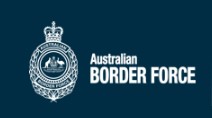OIG Report – US CBP Has Improved Southwest Border Technology, but Significant Challenges Remain
In response to Executive Order 13767, U.S. Customs and Border Protection (CBP) has implemented an array of new tools and technologies that have enhanced Border Patrol’s surveillance capabilities and efficiency along the southwest border.
However, these upgrades are incomplete as CBP has deployed about 28 percent of the surveillance and subterranean technology solutions planned, even after receiving more than $700 million in funding since fiscal year 2017.
Shifting priorities, construction delays, a lack of available technology solutions, and funding constraints hindered CBP’s planned deployments. Consequently, most southwest Border Patrol sectors still rely predominantly on obsolete systems and infrastructure with limited capabilities. CBP faced additional challenges that reduced the effectiveness of its existing technology.
Border Patrol officials stated they had inadequate personnel to fully leverage surveillance technology or maintain current information technology systems and infrastructure on site. Further, we identified security vulnerabilities on some CBP servers and workstations not in compliance due to disagreement about the timeline for implementing DHS configuration management requirements.
CBP is not well-equipped to assess its technology effectiveness to respond to these deficiencies. CBP has been aware of this challenge since at least 2017 but lacks a standard process and accurate data to overcome it.
Overall, these deficiencies have limited CBP’s ability to detect and prevent the illegal entry of noncitizens who may pose threats to national security. Deploying adequate technologies is essential for CBP to ensure complete operational control of the southern border.
OFFICE OF INSPECTOR GENERAL Department of Homeland Security – Full Report
Image courtesy: US DHS OIG




